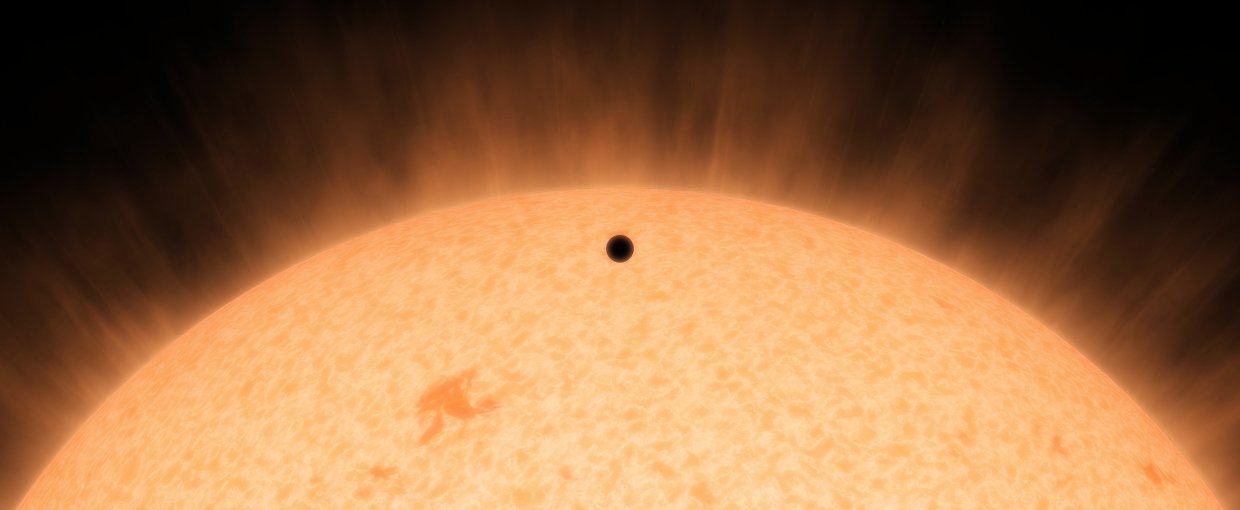
Jan. 4, 2018
Research Highlight
Opacity Sources and Physical Processes that Shape Exoplanet Transit Spectra

This artist's concept shows the silhouette of a rocky planet, dubbed HD 219134b. At 21 light-years away, the planet is the closest outside of our solar system that can be seen crossing, or transiting, its star.Image credit: NASA/JPL-Caltech/T. Pyle.
Observing the transit spectra of exoplanets can help scientists study the physics and chemistry of distant planets, and is essential in understanding their habitability. Many processes affect the shape of transit spectra, and two in particular have been the focus of recent study: refraction and cloud and/or haze forward-scattering. Many models of these two processes are complex, and they have been difficult to incorporate into the tools astronomers use to study transit spectrum. Now, a team of scientists has developed analytic expressions that could help incorporate forward-scattering and refraction effects into existing tools.
The study, “Analytic Scattering and Refraction Models for Exoplanet Transit Spectra,” was published in The Astrophysical Journal. The work was supported by the Nexus for Exoplanet System Science (NExSS). NExSS is a NASA research coordination network supported in part by the NASA Astrobiology Program. This program element is shared between NASA’s Planetary Science Division (PSD) and the Astrophysics Division.